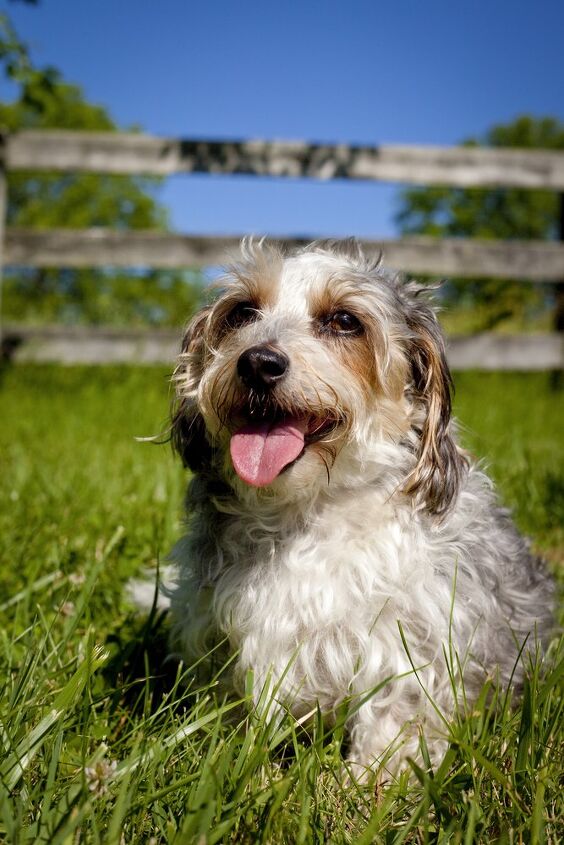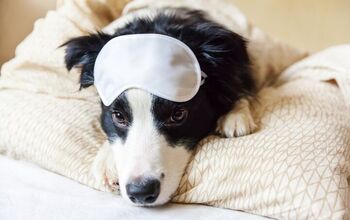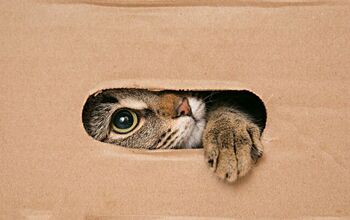Silkshund


About Silkshund
A small dog with a lot of spirit- the Silkshund is the perfect compact companion for singles and seniors. These dogs are full of spunk and have a colorful personality that leaves no one indifferent. In fact, you’ll be surprised that such a big attitude can fit in such a small pooch. But if you know the parents- it all makes sense!
A mixed breed dog, the Silkshund is the offspring of the Silky Terrier and a Dachshund. The two toy dog breeds might not look alike, but they have a lot of things in common- from similar histories to size. Their babies tend to be petite, with medium length hair, and a feisty, energetic personality. Naturally, when dogs mix, one breed might have more genetic influence than the other, especially in terms of appearance. Nothing is ever certain with designer dogs!
You can be sure of one thing, though- you’ll fall in love with these hybrids as soon as you see them. Not only that they’re incredibly adorable, but they’re also very friendly and sweet. But, not unlike many small dogs, the Silkshund also has some potentially problematic traits in store for their owners- read on to find out if this particular designer dog breed is the right choice for you.
The Silkshund is also known as Dachsky or Silky Doxie.
The sweet and smart Silkshund is the perfect compact companion for singles and seniors.
Not many designer dog breeds can boast to have a documented history. In fact, the overwhelming majority of hybrids has quite a mysterious past, and no one knows when or who first started breeding them. Silkshund is the same. The best guess anyone has is that the Doxie-Silky Terrier mix came to be in the United States, sometime in the last two decades.
Regardless, even if the breed has a short and uneventful history, the Silkshund’s parental breeds more than make up for it. Both the Silky Terrier and the Dachshund are dogs with a long tradition as pets and companions. The Dachshund got its start in 16th century Germany, where it was used to hunt badgers, long before the breed became a family pet. Similarly, the Silky Terrier was also a hunter- this tiny dog was an indispensable vermin terminator in 19th century Australia.
The Silkshund breed is developed by breeding a Dachshund to a Silky Terrier. The direct descendant of two different purebred dogs is called an F1 or a first generation mix. These crossbreeds are very unpredictable- there is no way to know if one of the parents will be more dominant in the mix or if the puppy will inherit traits from both dogs. Even so, many breeders claim that the F1 mixes are the healthiest- although the jury is still out on these claims.
Since this is a mixed breed dog, it is not recognized by the American Kennel Club or its international counterparts. As a result, Silkshund puppies don’t get official pedigree papers. Nevertheless, reputable breeder will have a pedigree for the purebred mom or dad. This could help you get some insight into your new pet’s family tree and tell you what to expect when they grow up.
In any case, with the Silkshund, everything depends on the parents, The health, the looks, the behavior- it’s important to choose a good breeder that will select only suitable dogs for their program. Backyard breeders, puppy mills, and dubious pet stores are profit-oriented and don’t care about the health and wellbeing of the puppies they sell. This is why their dogs are often sick and grow up to have many behavioral issues.
When it comes to canine nutrition, the sheer number of options tends to confuse owners, especially beginner dog parents. You have people advocating B.A.R.F or raw food as the best dog diet, others feed commercial pet food, and some cook meals for their dogs. So what’s the ideal choice of diet for your own pet? Most experts agree that high-quality dry food for dogs is the safest way to get your pooch all of those important nutrients. The Silkhund will do best on kibble that meets their own unique needs. Choose dry food suitable for your pet’s age (puppy, adult, senior), size, and activity level- usually kibble for small dogs is a solid choice.
Owing to their small size, the Silkshund won’t need much food to be full. Usually, it’s no more than a cup of kibble per day, but follow the manufacturer’s advice just to be sure. The important thing is not to go overboard with your serving sizes! The Silkshund is prone to obesity and will quickly gain weight if he overeats. In turn, the excess weight will put stress on their joints and possibly cause a host of other health issues along the way. Free feeding is also a bad idea- it’s better to split the daily dose of food into two separate meals.
The Silkshund is also known as Dachsky or Silky Doxie.
The Silkshund is a highly intelligent breed, but not necessarily a highly trainable one, as well. Both the Silky Terrier and the Dachshund tend to have a stubborn streak and their offspring can inherit it- which can make training a bit more tiresome. Even so, they’re not difficult dogs to train; it’s only that beginner owners could find them a handful at times.
The key is to assert yourself as the leader of the pack and don’t let your tiny tyrant stomp all over you with his cute paws. To do so, you will have to exude confidence and be firm in your methods- which should be reward-based. Positive reinforcement training is the only thing that works with the Silkshund, as treats and praise can be one heck of a motivational tool for these willful pooches. Yelling, punishments and any other aversive methods will only be counterproductive. Not to mention they’re cruel and will damage the relationship you have with your pet!
You should start training as early as possible. Timely socialization and basic training will ensure your Silkshund is friendly and well-behaved. As a breed, they can be prone to separation anxiety, excessive barking, and resource guarding. In addition to basic obedience training, you should pay attention to train them in a way that would prevent these issues from arising. Make sure your dog responds to the command quiet, crate train them, and discourage jealousy and possessiveness.
Both the Doxie and the Silky Terrier are small dogs, and their offspring will be the same. There are some variations in body type, but their weight is quite predictable. An adult Silkshund will weigh between 10 and 5 pounds, and be 7 to 10 inches “tall”.
If there’s one thing that the Silkshund doesn’t lack- it’s personality! These small dogs have a personality that’s larger than life, let alone their petite frames. The Doxie-Silky Terrier mix is an intelligent, playful, and sweet dog. They have a bit of an independent nature, as they like to go about their day and try and find some trouble to get into, but they are very affectionate and close to their owners. In fact, it’s highly likely that the Silkshund will abandon whatever he’s doing at the moment to check up on you and join you in your activities for the day. Owing to his parents, this designer dog really is the perfect companion.
Of course, it’s easy to think that a small, cute dog such as the Silkshund has no flaws and only wants to sit in your lap and cuddle non-stop. Ah, the perils of looking like a toy! However, hybrids don’t just inherit the best of both worlds, and often some of the less desirable traits are passed on to the puppy. As both the Dachshund and the Silky Terrier were bred to be hunters, you can count on your adorable designer dog to have a high prey drive and live to chase small critters around. Also, they can be quite vocal by nature and only timely training and socialization can help curb their excessive barking tendencies.
The Silkshund can be considered a relatively healthy dog if the puppy came from a reputable source. However, no two dogs are alike, and that’s especially true for mixed breed dogs. Some hybrids will be as healthy as possible, with no inherited issues, whereas some don’t have the same luck with the genetic lottery and end up being at risk for two sets of breed-specific health issues.
Some of the potential problems this designer dog could be prone to include diabetes, epilepsy, hip and elbow dysplasia, Legg-Calve-Perthes disease, and eye issues. Also, it’s advisable not to let your dog jump from high surfaces or do any kind of “acrobatics” small dogs like to do, as they are extremely prone to canine disk disease and can easily injure themselves in the process.
The average life expectancy for a small dog breed such as the Silkshund is between 13 and 16 years.
The Silkshund is spunky, full of energy and very playful- and yet, it’s not a high-maintenance dog when it comes to its activity requirements, That’s because it’s quite easy to tire out a petite pooch- a few laps of ball fetching across the room and they’ll be napping the whole afternoon.
On average, this hybrid will need between 30 to 60 minutes of deliberate exercise. Make sure to include outdoor time, too, as all dogs need to be out on the fresh air, whether it’s a brisk walk to go potty or playtime in a securely fenced backyard. Just make sure to always supervise your pet, since the Silkshund can climb or dig his way out of the yard if he spots a squirrel. The same goes for leash walking- keep them leashed unless you want your pooch to dart off after a critter.
The Silkshund is a highly intelligent breed, but not necessarily a highly trainable one, as well.
None of the major canine clubs such as the AKC, UK Kennel Club, or the Canadian Kennel Club recognize designer dogs as actual breeds. There are plenty of smaller organizations that do, though. The American Canine Hybrid Club and Designer Breed Registry recognize the Doxie-Silky Terrier mix as the Silkshund and International Designer Canine Registry recognizes this breed under the name Silky Doxie.
The name Silkshund speaks a lot about the breed’s coat. Usually, the “silky” genes prevail and the hybrid puppies have a soft, fluffy medium length coat. However, the Dachshund comes in 3 coat types (short, long, wiry) and it will influence the type of hair puppies have. These crossbreeds could be a perfect combination of the two or resemble one parent more than the other.
In any case, the Silkshund is not demanding when it comes to grooming. Light daily brushing and a bath once a month will keep your pet looking his best.
On average, Silky Terrier and Dachshund will produce a litter of 3 to 5 puppies. While they’re all sure to be cute, that’s about the only thing that’s certain about them- the differences in the appearance of the puppies could be quite dramatic, even across one litter.
Regardless, Silkshund puppies need early training and socialization. This helps curb some of their less desirable personality traits and ensures that they grow up to be social and sweet and not bossy toy dogs!
Photo credit: photojuls/Shutterstock; Dmussman/Shutterstock

A proud mama to seven dogs and ten cats, Angela spends her days writing for her fellow pet parents and pampering her furballs, all of whom are rescues. When she's not gushing over her adorable cats or playing with her dogs, she can be found curled up with a good fantasy book.
More by Angela Vuckovic
























